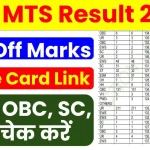
In a major shift for Indian bank account holders, the government has approved a new banking law that allows customers to add up to four nominees in their bank account. This update, introduced through the Banking Laws (Amendment) Bill, 2024, brings much-needed flexibility and clarity for individuals planning their estate and securing their family’s financial future.
Until now, most banks allowed only one nominee per account, often leading to legal complications and delays when the account holder passed away. The latest update not only removes that restriction but also introduces simultaneous and successive nomination options for greater control over fund distribution.
Big Changes in New Banking Law
| Feature | Details |
|---|---|
| New Rule | Up to 4 nominees allowed per bank account |
| Nomination Methods | Simultaneous (split in percentages) or Successive (priority order) |
| Applies to | Savings, current, fixed deposit accounts, and bank lockers |
| Purpose | Simplifies asset distribution, reduces disputes, and minimizes unclaimed funds |
The move to allow up to four nominees in a single bank account is a progressive and much-needed reform in India’s banking sector. It offers clarity, flexibility, and security for customers looking to plan their financial legacy responsibly. With this change, families can avoid legal hassles, reduce the risk of unclaimed funds, and respect the account holder’s wishes without ambiguity.
Breaking Down the New Nomination Rule
Old vs New Nominee Rules
Earlier, if an account holder passed away and the sole nominee was not available or also deceased, the legal heirs had to go through lengthy legal procedures to claim the money. This created unnecessary delays and uncertainty.
With the new multi-nominee rule, account holders can:
- Name up to four nominees for a single account.
- Distribute funds in specific percentages among them (simultaneous nomination).
- Or designate a priority order (successive nomination), where if the first nominee is unavailable, the second becomes eligible, and so on.
This update offers clarity and security, especially for families with multiple dependents or complex inheritance situations.
Where This Rule Applies
The new rule applies to:
- Savings Accounts
- Current Accounts
- Fixed Deposits (FDs)
- Recurring Deposits (RDs)
- Bank Lockers (successive nomination only)
It is important to note that for lockers, simultaneous nomination is not allowed — only one nominee can be assigned at a time in order of succession.
see also: Post Office’s Popular Scheme Get a Return
Why This Change Matters: Real-World Benefits
1. Reduces Legal Disputes
Many families end up in court fighting over bank accounts when the nominee is missing or disputed. Having multiple nominees reduces ambiguity, minimizes conflict, and allows smoother access to funds.
2. Prevents Unclaimed Deposits
According to the RBI, there were over ₸37,000 crore in unclaimed deposits with banks as of 2023. Many of these remained unclaimed due to lack of nomination or nominee disputes. This change could drastically reduce those numbers.
3. Empowers Customers
Account holders now have greater control over how their assets are handled after death. They can plan better for the financial well-being of their family.
4. Adds Flexibility
People with blended families, dependent siblings, or aged parents can ensure custom distribution instead of defaulting everything to one person.
How to Add 4 Nominees in Your Bank Account
Step 1: Visit Your Bank Branch or Net Banking Portal
Most major banks like SBI, HDFC, ICICI, and Axis now support nominee updates via their internet banking platforms or mobile apps. Alternatively, you can visit your nearest branch.
Step 2: Submit Nomination Form (DA1)
Fill out the DA1 form to declare or update nominees. For multiple nominees, indicate either:
- Simultaneous nomination with percentage allocation (e.g., 40%, 30%, 30%)
- Successive nomination with order (e.g., Nominee A > Nominee B > Nominee C)
Step 3: Provide ID Proof of Nominees (if required)
While not mandatory at all banks, some may ask for basic KYC documents like Aadhaar or PAN.
Step 4: Get Acknowledgment Slip
Once submitted, the bank will provide a confirmation receipt or update your passbook/account portal with nominee details.
Step 5: Review and Update Regularly
Make it a habit to review your nominee list every 2-3 years or after major life events like marriage, childbirth, or the passing of a nominee.
Example Scenario: How It Works
Rahul, a 45-year-old businessman, has a savings account with ₹1,00,000. He nominates:
- Spouse – 50%
- Daughter – 25%
- Son – 25%
- Brother – Successive nominee (in case any of the first three are not available)
This ensures fair distribution and coverage for different outcomes. His family won’t have to go through legal processes, and his intentions are clearly recorded.
see also: These Schemes of Post Office Will Be Useful for Saving Money, You Will Get Huge Returns
Big Changes in New Banking Law FAQs
Q1. Can I add or remove a nominee anytime?
Yes. You can update your nomination at any point by filling a fresh DA1 form.
Q2. Is it compulsory to register 4 nominees?
No. You can register 1 to 4 nominees, depending on your preference.
Q3. What if the nominee is a minor?
If a nominee is below 18 years, you must provide details of a guardian who will receive the money on their behalf.
Q4. Do NRIs or joint account holders get this benefit?
Yes. NRIs and joint account holders can also use the new multi-nomination feature. However, in joint accounts, all account holders must agree on the nomination.
Q5. Are there any fees for adding or updating nominees?
No. Most banks provide this service free of charge.











